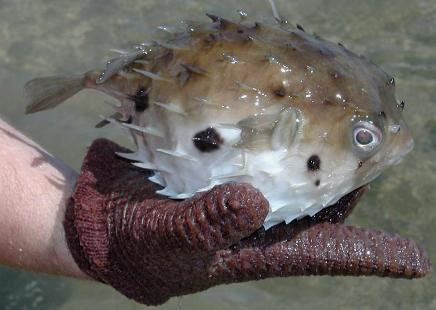
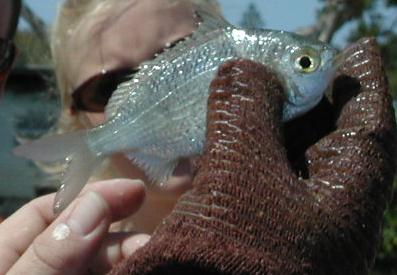


Among the catch were Cyclichthys jaculiferus, "Long-spined Porcupinefish", Gerres subfasciatus, "Common Silverbiddy...
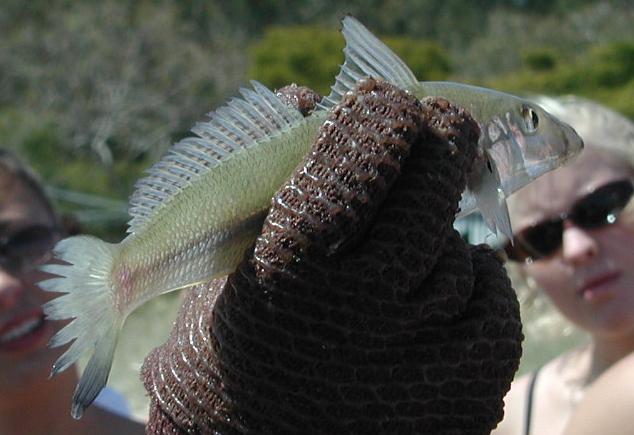 Sillago ciliata, "Sand Whiting"...
Sillago ciliata, "Sand Whiting"...
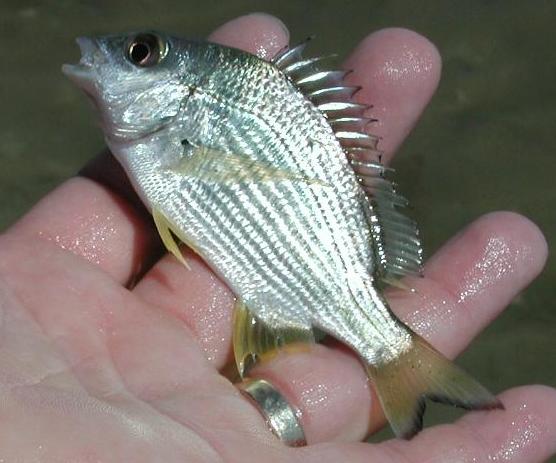 Acanthopagrus australis, "Yellow-finned Bream"...
Acanthopagrus australis, "Yellow-finned Bream"...
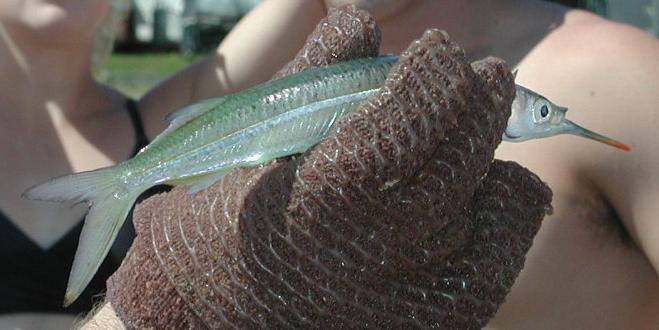 and Hyporhamphus regularis ardelio, "Garfish."
and Hyporhamphus regularis ardelio, "Garfish."
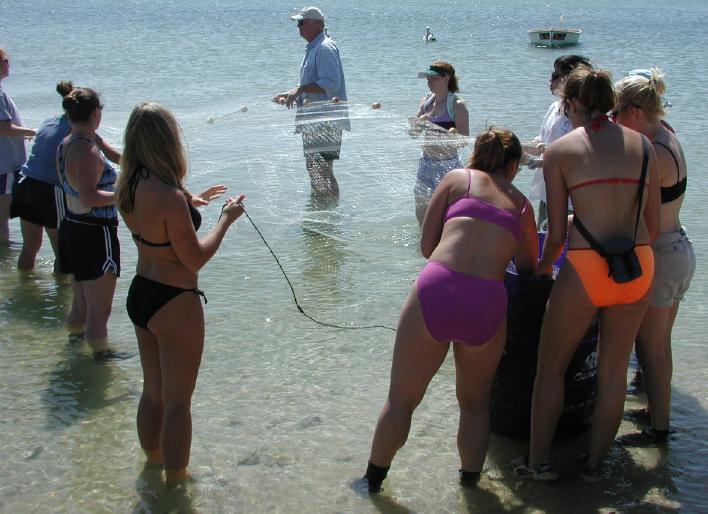 Cleaning the net and storing it.
Cleaning the net and storing it.
 Among the shore birds nearby during the seining were
Egretta alba, "Great Egret" and
Pellecanus conspicillatus, "Australian Pelican."
Among the shore birds nearby during the seining were
Egretta alba, "Great Egret" and
Pellecanus conspicillatus, "Australian Pelican."
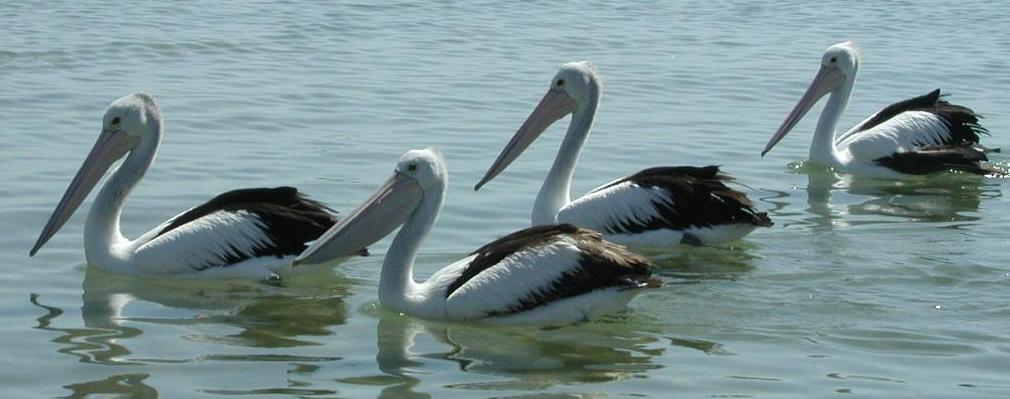
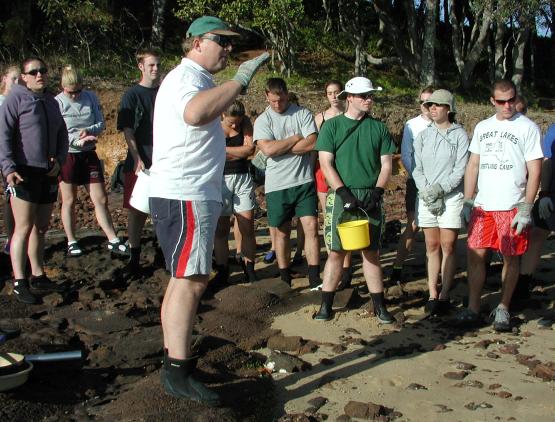 The afternoon began with a walk along the rocky shores at Polka Point with Dr. Ian
Tibbetts leading a discussion its environmental processes and suggesting possible
project topics.
The afternoon began with a walk along the rocky shores at Polka Point with Dr. Ian
Tibbetts leading a discussion its environmental processes and suggesting possible
project topics.
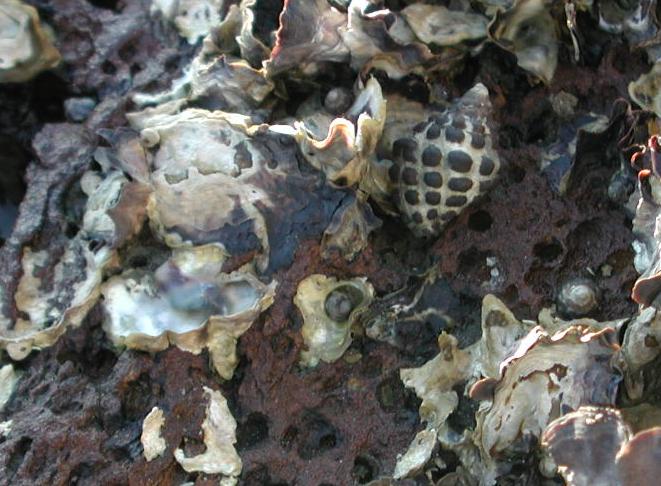 A mulberry whelk, Morula marginalba, and oysters on shore rock at Polka Point.
A mulberry whelk, Morula marginalba, and oysters on shore rock at Polka Point.
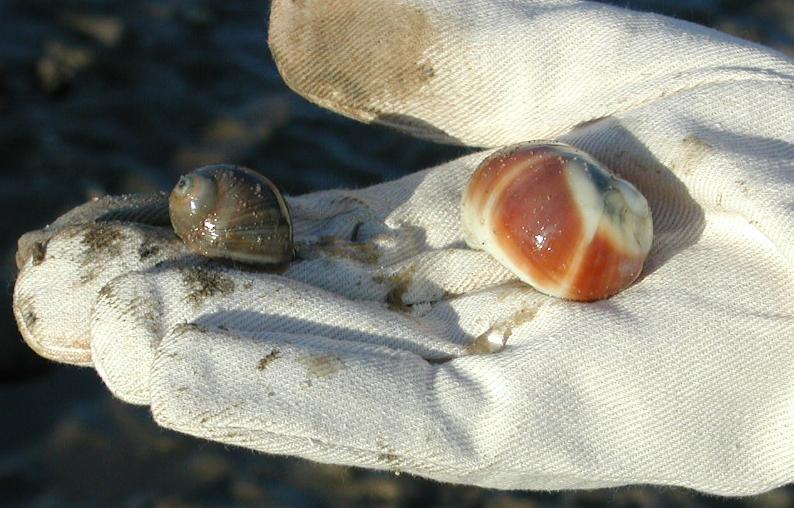 A live (left) and dead moon snail from the intertidal flat at Polka Point.
A live (left) and dead moon snail from the intertidal flat at Polka Point.
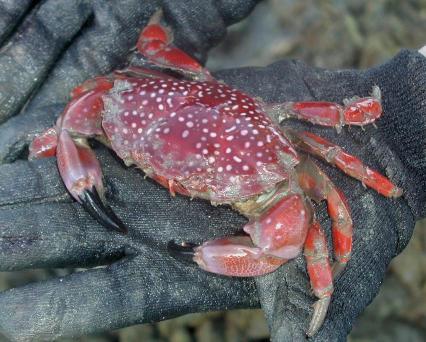 Lophozozymus erinnyes, "Red and White-spotted Reef Crab," from the rocky shores of the
intertidal zone at Polka Point.
Lophozozymus erinnyes, "Red and White-spotted Reef Crab," from the rocky shores of the
intertidal zone at Polka Point.
 Phyllodoce novaholliandiae, Green Paddle Worm, on the muddy sands
in the intertidal flat at Polka Point.
Phyllodoce novaholliandiae, Green Paddle Worm, on the muddy sands
in the intertidal flat at Polka Point.
 A large Moreton Bay Baler, Melo georginae, on the muddy sands
in the intertidal flat at Polka Point. Length: 250 cm.
A large Moreton Bay Baler, Melo georginae, on the muddy sands
in the intertidal flat at Polka Point. Length: 250 cm.
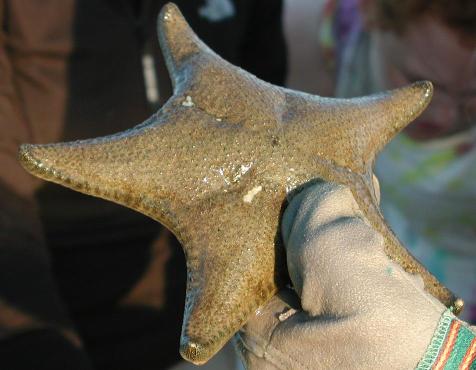
Two sea stars, Anthenea crassa, "Vulgar Starfish," on the left and Pentaceraster regulus, "Spotted Seastar."
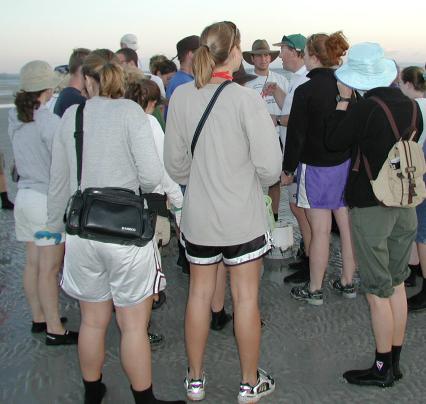 A second discussion in the intertidal flat ended the afternoon's activities.
A second discussion in the intertidal flat ended the afternoon's activities.